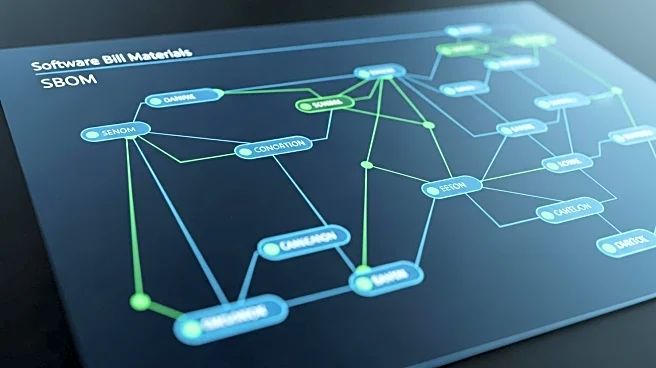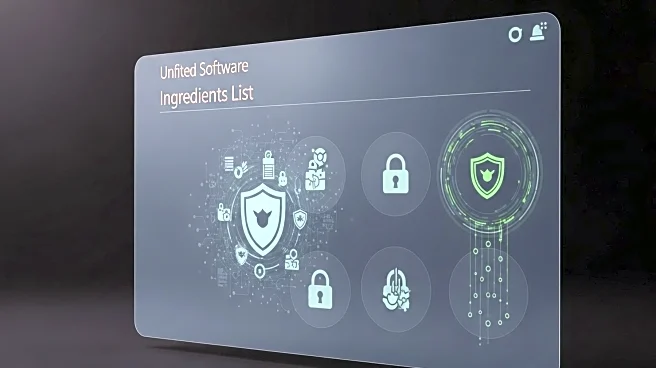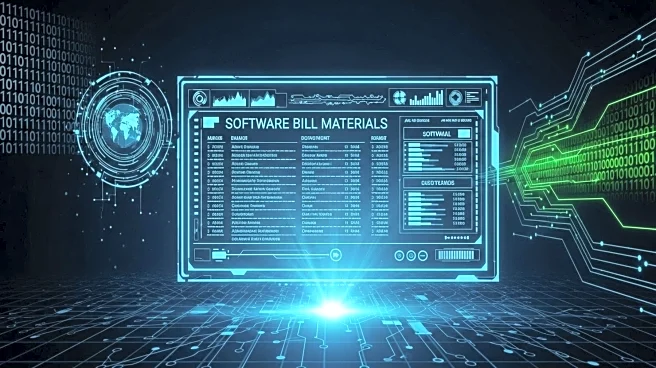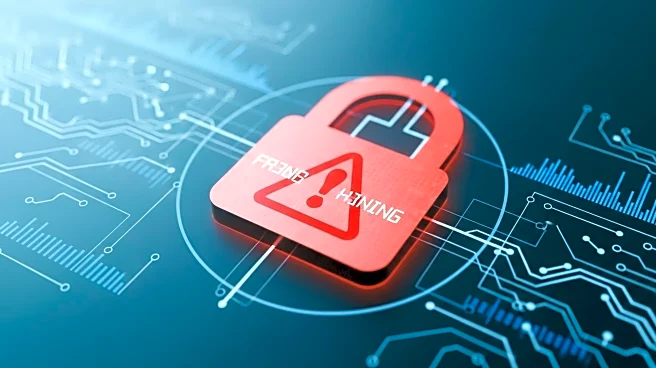What's Happening?
Government agencies in the United States, along with 14 allied countries, have issued new guidance promoting the adoption of Software Bills of Materials (SBOMs) to enhance cybersecurity. The guidance outlines the benefits of integrating SBOM generation, analysis, and sharing into security practices, emphasizing that SBOMs can improve security, reduce risks, and lower costs. SBOMs provide detailed information about the provenance and security of software components, helping organizations manage security risks in the software supply chain. The guidance highlights the importance of transparency, particularly for software used in critical infrastructure and systems that impact public safety. SBOMs are formal records detailing the relationships between software components, offering visibility into the software supply chain. This transparency aids in risk management, vulnerability management, and software development processes.
Why It's Important?
The push for SBOM adoption is significant as it addresses the growing need for transparency in the software supply chain, a critical aspect of cybersecurity. By enabling organizations to better understand software dependencies, SBOMs enhance the efficacy of risk management practices. This is particularly crucial for critical infrastructure, where software vulnerabilities can have severe consequences. The guidance suggests that SBOMs can reduce the time needed to identify and respond to vulnerabilities, thereby minimizing potential damage. The adoption of SBOMs is expected to lower component management costs and reduce downtime during vulnerability responses. This initiative reflects a broader effort to secure the software ecosystem by promoting transparency and accountability among software producers and users.
What's Next?
The guidance encourages the widespread adoption of SBOMs across the software development process. It suggests that SBOMs should be machine-processable and shared downstream to facilitate faster responses to new risks. The agencies involved in issuing the guidance advocate for automation in SBOM generation, management, and consumption. As organizations begin to implement these practices, there may be increased collaboration between software producers, choosers, and operators to ensure comprehensive security measures. The guidance also aligns with ongoing efforts by agencies like the Cybersecurity and Infrastructure Security Agency (CISA) to update SBOM guidance and frameworks, indicating a continued focus on enhancing cybersecurity through improved software transparency.












